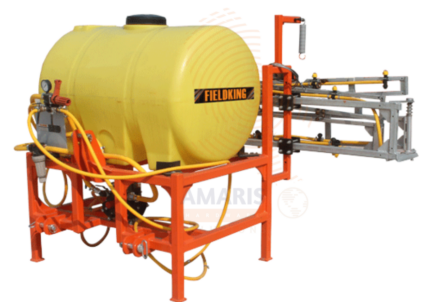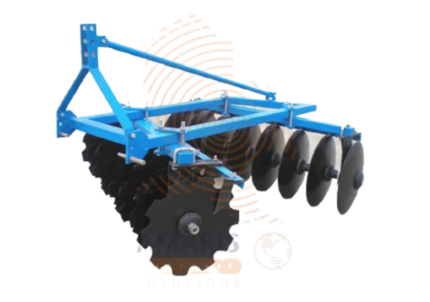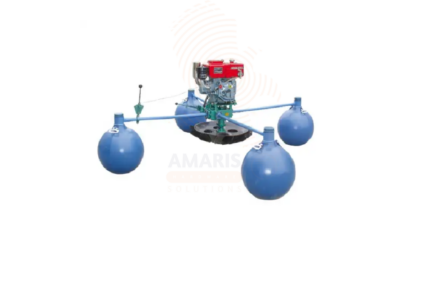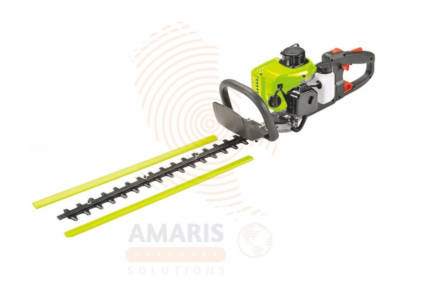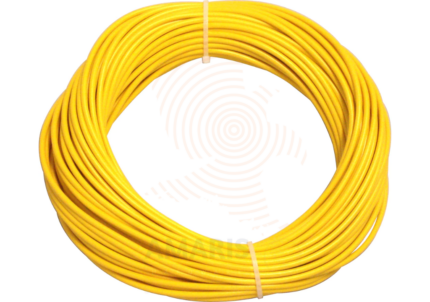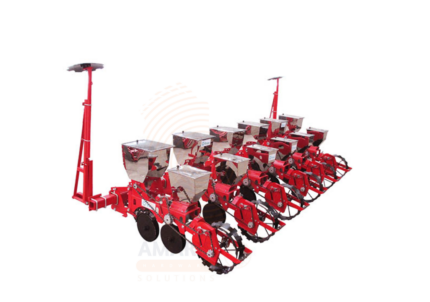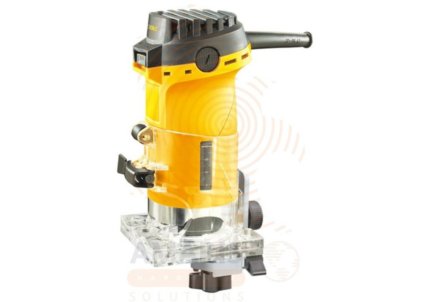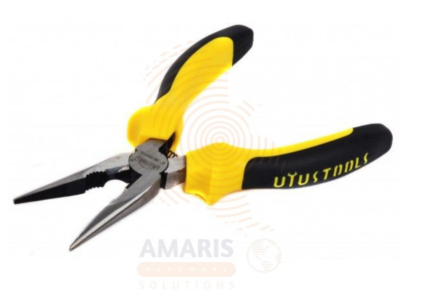
Long Nose Pliers
$16.65 Original price was: $16.65.$15.82Current price is: $15.82.
Lopping Saw
WhatsApp Order
A lopping saw is a specialized cutting tool designed for pruning and trimming tree branches, typically featuring a long, curved blade with large, sharp teeth. This tool is specifically crafted to make it easier to reach and cut through high or thick branches that may be challenging to access with standard pruning shears or a traditional saw. Lopping saws are commonly used in gardening, arboriculture, and forestry to facilitate efficient and controlled pruning of trees and shrubs.
Description
Uses
- Tree Pruning:
- Lopping saws are designed to cut through thick branches, making them ideal for pruning trees. They allow for the removal of dead or overgrown branches to improve the overall health and appearance of the tree.
- Shrub Trimming:
- Lopping saws are effective for trimming and shaping shrubs and bushes, providing a precise and controlled cutting action.
- Landscaping:
- In landscaping projects, lopping saws are useful for shaping trees and plants to achieve a desired aesthetic. They can help maintain a neat and well-groomed landscape.
- Gardening:
- Gardeners often use lopping saws to prune fruit trees, ornamental trees, and other plants in the garden. This helps in controlling growth, promoting flowering, and improving fruit production.
- Clearing Overgrowth:
- Lopping saws are valuable for cutting through dense vegetation and overgrown areas. They can be used to clear paths, trails, and areas where traditional pruning tools may be insufficient.
- Emergency Tree Removal:
- In emergency situations, such as when a tree branch poses a risk of falling, lopping saws can be employed to safely and efficiently remove the hazardous limb.
- Forestry and Arboriculture:
- Professionals in forestry and arboriculture use lopping saws for routine maintenance and care of trees in parks, urban areas, and forests. They are particularly useful for working at heights and reaching branches that are difficult to access.
- Firewood Preparation:
- Lopping saws can be used to cut branches into manageable lengths for firewood. Their portability and ability to cut through thick wood make them handy for this purpose.
- Pruning High Branches:
- Lopping saws are equipped with long handles that enable users to reach high branches without the need for a ladder. This makes them safer and more practical for cutting branches at elevated heights.
- Home and Garden Maintenance:
- Homeowners use lopping saws for general yard maintenance, including the removal of unwanted branches and the shaping of trees and shrubs around the property.
SAFETY HANDLING PRECAUTIONS
- Wear Personal Protective Equipment (PPE):
- Always wear appropriate personal protective equipment, including safety glasses or goggles to protect your eyes from debris, and sturdy gloves to safeguard your hands.
- Wear a Helmet:
- If you're working on larger branches or at heights, consider wearing a safety helmet with a face shield or eye protection to protect your head and face.
- Use Hearing Protection:
- Lopping saws can be noisy, so wear ear protection such as earplugs or earmuffs to prevent hearing damage.
- Wear Long Sleeves and Pants:
- Long sleeves and pants can provide additional protection against scratches, cuts, and exposure to the sun. Choose durable, comfortable clothing suitable for outdoor work.
- Inspect the Lopping Saw:
- Before each use, inspect the lopping saw for any damage or wear. Ensure that the blade is sharp and securely attached. Replace any damaged or dull blades, and tighten any loose components.
- Follow Manufacturer's Instructions:
- Adhere to the manufacturer's guidelines and recommendations for the proper use and maintenance of the lopping saw. This includes information on blade replacement, tensioning, and other important safety considerations.
- Choose the Right Tool for the Job:
- Select a lopping saw that is appropriate for the size of branches you are cutting. Using a tool with the correct capacity helps ensure efficient and safe operation.
- Maintain a Stable Stance:
- Stand on a stable and level surface while using the lopping saw. Keep your feet shoulder-width apart to maintain balance and prevent tripping.
- Use Both Hands:
- Always use both hands to operate the lopping saw. This provides better control and reduces the risk of accidents. Keep one hand on the handle and the other on the auxiliary handle for stability.
- Beware of Falling Debris:
- Be aware of the potential for falling branches or debris. Consider the trajectory of cut branches and make sure there are no people or valuable objects in the immediate area.
- Avoid Overreaching:
- Do not overreach when using a lopping saw, especially when working at heights. If a branch is out of reach, reposition yourself instead of stretching too far.
- Keep Others at a Safe Distance:
- Ensure that bystanders and other workers are at a safe distance while you are using the lopping saw. Communicate with others to avoid accidental collisions.
- Secure the Work Area:
- Remove tripping hazards and ensure a clear path for movement. Secure any branches or debris that could pose a risk during the cutting process.
- Know Your Limits:
- If a task seems beyond your skill level or the tool's capacity, seek professional assistance. Don't attempt to cut branches that are too large or in challenging positions without proper training and experience.
Related products
Boom Sprayer
A Boom Sprayer is an agricultural implement designed to apply liquids such as herbicides, pesticides, fertilizers, and water evenly over large crop areas. It features a horizontal boom equipped with multiple nozzles spaced at intervals, allowing for wide coverage and uniform spray distribution. Boom sprayers can be mounted on tractors, pulled behind as trailers, or be self-propelled units. They enhance the efficiency and accuracy of spraying operations in farming, reducing manual labor and ensuring effective crop protection and nutrition.
Disc Harrow
A disc harrow is an essential agricultural implement used to till the soil, break up clods, and prepare the land for planting. It consists of multiple concave metal discs arranged on one or more axles, which rotate and cut into the soil as it is pulled across fields by a tractor or other machinery. The discs chop up crop residue, aerate the soil, and create a smooth, even seedbed. Disc harrows vary in size and configuration to suit different soil types and farming needs. This tool improves soil quality, weed control, and crop yields, making it indispensable in modern farming.
Fish Aerator
A fish aerator is a device designed to increase oxygen levels in water, essential for maintaining the health and survival of fish in aquaculture systems, ponds, tanks, and live fish transport. It works by agitating water or releasing air bubbles to promote gas exchange between air and water. Fish aerators are commonly used in fish farming, aquariums, and bait tanks to prevent oxygen depletion, especially in densely stocked or warm water conditions. They improve water quality, reduce fish stress, and promote better growth and survival rates.
Gasoline Hedge Trimmer
A gasoline hedge trimmer is a handheld gardening tool powered by a gasoline engine, designed for trimming and shaping hedges, bushes, and shrubs. It consists of a cutting blade or blades, typically reciprocating, attached to a long shaft with a handle or grip for ease of use. The gasoline engine provides the necessary power to drive the blades, offering mobility and independence from electrical outlets, making it suitable for use in outdoor settings where access to electricity may be limited. Gasoline hedge trimmers are valued for their versatility, allowing users to manicure and maintain landscaping with efficiency and precision.
Nylon Round Trimmer Line
The Nylon Round Trimmer Line is a flexible, durable cutting line used in grass trimmers and brush cutters for lawn maintenance and landscaping. Made from high-strength nylon material, it features a round cross-section that provides excellent wear resistance, smooth cutting performance, and minimal breakage. This type of line is ideal for light to moderate trimming tasks such as edging lawns, clearing grass around trees, fences, and garden beds. It fits most standard string trimmers and is easy to wind into spool heads. Its consistent diameter ensures even wear and effective vegetation cutting across a variety of conditions.
Planter
A Planter is a container or device used to hold soil and plants for gardening, landscaping, or indoor decoration. Planters come in various sizes, shapes, and materials, such as plastic, ceramic, metal, or wood, designed to provide an ideal growing environment for flowers, herbs, vegetables, or ornamental plants. They are essential for organizing plants in limited spaces, improving aesthetics, and facilitating plant care by providing drainage and soil containment.
Telescopic Hedge Shear
A telescopic hedge shear is a gardening tool specifically designed for trimming and shaping hedges and bushes. It typically consists of two long, straight blades with serrated edges that are operated by handles at the end of long telescopic arms. The telescopic feature allows users to extend the reach of the shears, making it easier to trim tall or hard-to-reach areas of hedges without the need for a ladder. This tool is commonly used in landscaping and gardening to maintain the desired shape and size of hedges, promoting a neat and well-manicured appearance in outdoor spaces.
Trimmer
A Trimmer typically refers to an electric trimmer with a power rating of 500 watts. This type of trimmer is commonly used for various tasks such as cutting or trimming grass, shrubs, and other vegetation in gardens or outdoor spaces. The 500W rating indicates the power consumption or output of the trimmer, suggesting that it is suitable for medium-duty tasks. Trimmers of this kind often come with adjustable settings, cutting attachments, and ergonomic designs to facilitate efficient and comfortable use in maintaining lawns and landscaping.


 Acrylic Sealants
Acrylic Sealants Construction Adhesives
Construction Adhesives Double-Sided Tape
Double-Sided Tape Duct Tape
Duct Tape Electrical Tape
Electrical Tape Epoxy & Resins
Epoxy & Resins Masking Tape
Masking Tape
 Automotive Wrenches & Socket Sets
Automotive Wrenches & Socket Sets Battery Chargers & Jump Starters
Battery Chargers & Jump Starters Car Jacks & Stands
Car Jacks & Stands Car Wash & Detailing Products
Car Wash & Detailing Products Diagnostic Tools
Diagnostic Tools Tire Inflators
Tire Inflators Vehicle Lighting
Vehicle Lighting Oil & Lubricants
Oil & Lubricants
 Adhesives & Sealants
Adhesives & Sealants Bricks & Blocks
Bricks & Blocks Cement & Concrete
Cement & Concrete Drywall & Plaster
Drywall & Plaster Flooring (Tiles, Wood, Laminate)
Flooring (Tiles, Wood, Laminate) Lumber & Plywood
Lumber & Plywood Paints, Primers & Coatings
Paints, Primers & Coatings Insulation Materials
Insulation Materials Roofing Materials
Roofing Materials
 Circuit Breakers
Circuit Breakers Electrical Cables & Wires
Electrical Cables & Wires Switches & Sockets
Switches & Sockets Fuses & Relays
Fuses & Relays Connectors & Terminals
Connectors & Terminals Electrical Boxes & Panels
Electrical Boxes & Panels Conduit & Fittings
Conduit & Fittings Lighting Fixtures & Bulbs
Lighting Fixtures & Bulbs Extension Cords & Power Strips
Extension Cords & Power Strips
 Anchors
Anchors Bolts
Bolts Clips & Clamps
Clips & Clamps Screws
Screws Nuts
Nuts Washers
Washers Rivets
Rivets Nails
Nails Threaded Rods
Threaded Rods
 Hammers
Hammers Measuring Tools (Tapes, Levels, Calipers)
Measuring Tools (Tapes, Levels, Calipers) Screwdrivers
Screwdrivers Pliers & Cutters
Pliers & Cutters Saws & Blades
Saws & Blades Chisels & Punches
Chisels & Punches Allen Keys & Hex Keys
Allen Keys & Hex Keys Ratchets & Socket Sets
Ratchets & Socket Sets Wrenches & Spanners
Wrenches & Spanners
 Power Tool Accessories (Blades, Bits, Discs)
Power Tool Accessories (Blades, Bits, Discs) Rotary Tools
Rotary Tools Saws (Circular, Jigsaw, Reciprocating)
Saws (Circular, Jigsaw, Reciprocating) Drills & Drivers
Drills & Drivers Grinders & Sanders
Grinders & Sanders Heat Guns
Heat Guns Nail Guns
Nail Guns Impact Wrenches
Impact Wrenches Batteries & Chargers
Batteries & Chargers
 Pipes & Fittings (PVC, Copper, PEX)
Pipes & Fittings (PVC, Copper, PEX) Plumbing Tools
Plumbing Tools Pumps & Motors
Pumps & Motors Sealants & Adhesives for Plumbing
Sealants & Adhesives for Plumbing Valves & Taps
Valves & Taps Water Heaters
Water Heaters Drainage Systems
Drainage Systems Faucets & Fixtures
Faucets & Fixtures Hoses & Tubing
Hoses & Tubing
 Hinges & Latches
Hinges & Latches Hooks & Brackets
Hooks & Brackets Window Hardware
Window Hardware Chains & Cables
Chains & Cables Casters & Wheels
Casters & Wheels Shelving & Storage Systems
Shelving & Storage Systems Door Handles & Locks
Door Handles & Locks Drawer Slides & Cabinet Hardware
Drawer Slides & Cabinet Hardware
 Personal Protective Equipment (PPE)
Personal Protective Equipment (PPE) Respirators & Masks
Respirators & Masks Safety Glasses
Safety Glasses Safes
Safes Security Cameras
Security Cameras Gloves
Gloves Helmets
Helmets Ear Protection
Ear Protection Fire Safety Equipment
Fire Safety Equipment Locks & Padlocks
Locks & Padlocks Motion Sensors & Alarms
Motion Sensors & Alarms
 Garden Fencing
Garden Fencing Garden Furniture Hardware
Garden Furniture Hardware Lawn Mowers
Lawn Mowers Trimmers & Edgers
Trimmers & Edgers Shovels & Spades
Shovels & Spades Rakes & Hoes
Rakes & Hoes Pruning Shears & Loppers
Pruning Shears & Loppers Watering Systems (Hoses, Sprinklers, Nozzles)
Watering Systems (Hoses, Sprinklers, Nozzles)
 Interior Paints
Interior Paints Paint Brushes & Rollers
Paint Brushes & Rollers Paint Strippers & Thinners
Paint Strippers & Thinners Paint Trays & Accessories
Paint Trays & Accessories Exterior Paints
Exterior Paints Spray Paints
Spray Paints Primers & Undercoats
Primers & Undercoats Varnishes & Stains
Varnishes & Stains
 Gaskets & Seals
Gaskets & Seals Hydraulic Fittings
Hydraulic Fittings Industrial Fasteners
Industrial Fasteners Industrial Hoses
Industrial Hoses Lubricants & Greases
Lubricants & Greases Metal Sheets & Bars
Metal Sheets & Bars Bearings & Bushings
Bearings & Bushings Belts & Pulleys
Belts & Pulleys
 HVAC Filters
HVAC Filters Insulation for HVAC
Insulation for HVAC Air Conditioners
Air Conditioners Refrigerants
Refrigerants Ventilation Ducts & Fittings
Ventilation Ducts & Fittings Thermostats & Controllers
Thermostats & Controllers Fans & Blowers
Fans & Blowers
 Pegboards & Hooks
Pegboards & Hooks Shelving Units
Shelving Units Storage Bins & Containers
Storage Bins & Containers Toolboxes & Tool Chests
Toolboxes & Tool Chests Workbenches
Workbenches Drawer Organizers
Drawer Organizers Labeling Supplies
Labeling Supplies
 Welding Accessories (Clamps, Brushes)
Welding Accessories (Clamps, Brushes) Welding Electrodes & Rods
Welding Electrodes & Rods Welding Helmets & Gloves
Welding Helmets & Gloves Welding Machines
Welding Machines Soldering Irons & Stations
Soldering Irons & Stations Flux & Solder Wire
Flux & Solder Wire
 Generator Accessories
Generator Accessories Inverters
Inverters Portable Generators
Portable Generators Power Inverters
Power Inverters Transfer Switches
Transfer Switches Diesel & Gasoline Generators
Diesel & Gasoline Generators
 Transport Equipment: Carts, Dollies, and Hand Trucks
Transport Equipment: Carts, Dollies, and Hand Trucks Storage Solutions: Pallets, Racks, and Containers
Storage Solutions: Pallets, Racks, and Containers Lifting Equipment: Hoists, Cranes, and Jacks
Lifting Equipment: Hoists, Cranes, and Jacks Conveyors and Accessories: Belts and Rollers
Conveyors and Accessories: Belts and Rollers

